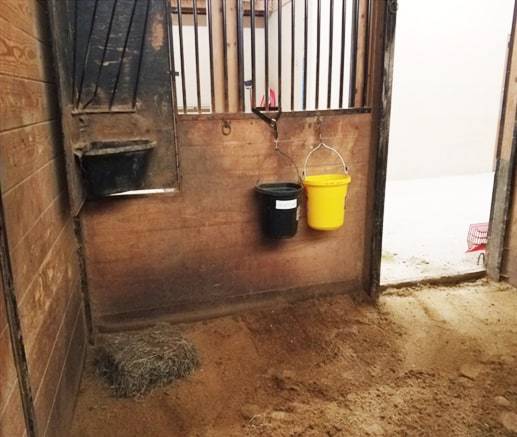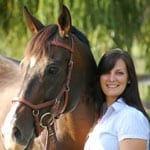Does Horse Water Bucket Placement Matter?

Brianna Akam, an undergraduate student working under the direction of Bethany Siehr, MA, assistant professor of equine business management at Wilmington College, in Ohio, shared the study results at the 2017 Equine Science Society (ESS) Symposium, held May 30-June 2 in Minneapolis, Minnesota.
Water, of course, is widely considered the most important part of a horse’s diet. Without it, horses can develop a number of life-threatening issues, including colic, dehydration, and electrolyte imbalances. So, many horse owners will try just about anything to ensure their charges stay well-hydrated.
In their study, Siehr and colleagues hung two water buckets in each of 12 test horses’ stalls between the door and a corner hay and grain feeding unit; they hoped to determine if horses drank more from the bucket closest to the door or the feeder. For six days, the team dumped, rinsed, and refilled the water buckets each morning and measured water intake and refilled buckets again at noon, 5 p.m., and 10 p.m
Create a free account with TheHorse.com to view this content.
TheHorse.com is home to thousands of free articles about horse health care. In order to access some of our exclusive free content, you must be signed into TheHorse.com.
Start your free account today!
Already have an account?
and continue reading.

Written by:
Erica Larson
Related Articles
Stay on top of the most recent Horse Health news with















